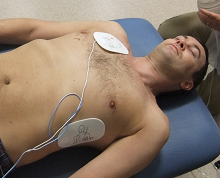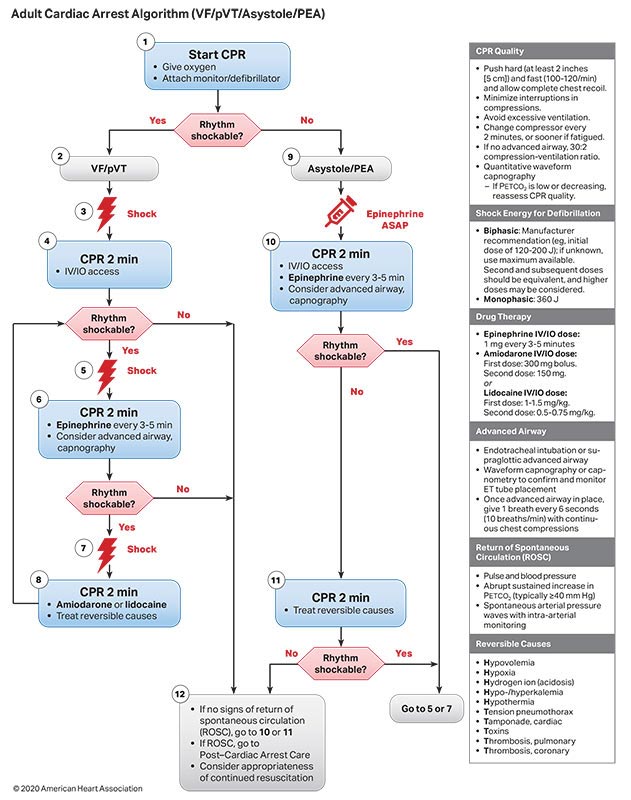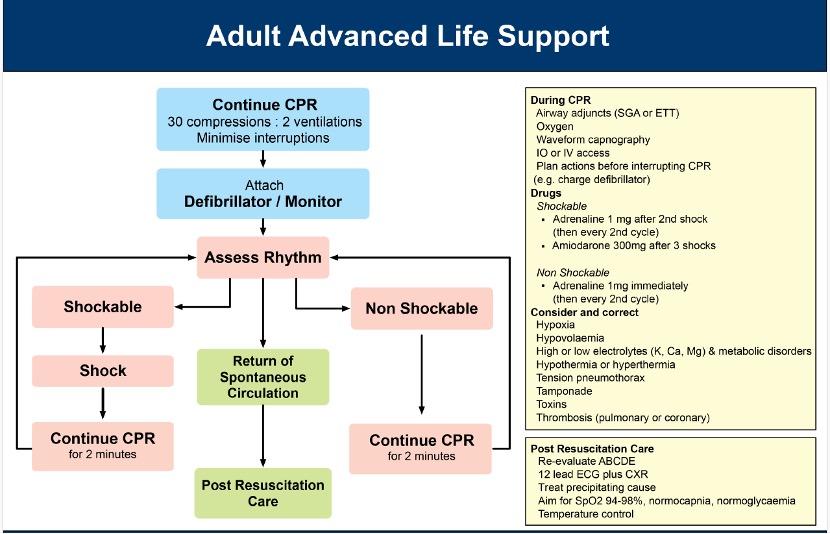Adult Advanced Life Support
This section is based on the European Resuscitation Council Guidelines

The above algorithm illustrates the important steps in advanced life support. It should be noted that the foundation of advanced life support is good quality basic life support. This has been discussed in the BLS chapter.
It is important that good quality chest compressions (depth 5-6cm, rate 100-120 per minute) and effective ventilations are carried out in a ratio of 30:2 with minimal interruptions. Without this, it is extremely unlikely that a return of spontaneous circulation will be achieved.
Once the AED is next to the patient, it should be turned on. The AED will prompt the rescuers to attach the pads to the patient’s bare chest and plug in the connector to the AED. One pad should be placed to the right of the upper sternum just below the clavicle and the other pad placed in the mid-axillary line lateral and inferior to the pectoralis tissue. To assist this most pads have a picture on their reverse as a guide to correct placement. CPR should not be interrupted while the pads are being placed on the patient’s chest.

Once the pads are placed on the patient’s chest, the AED will instruct the rescuers to “stand clear” while analysing the heart rhythm. The AED will then identify whether this is a shockable or non-shockable rhythm.
This section is based on the American Heart Association guidelines

Publication Name — Circulation.2020;142:S366-S468
2020 American Heart Association Guidelines for CPR & ECC – Part 3: Adult Basic and Advanced Life Support
Specifically: Page S373, Figure 2. Adult BLS algorithm for Healthcare Providers
Reprinted with permission, Circulation.2020;142:S366-S468, ©2020 American Heart Association, Inc.
https://cpr.heart.org/en/resuscitation-science/cpr-and-ecc-guidelines/algorithms#adult
This section is based on the ANZCOR Guidelines.

Pitch Extrication Team Cardiac Arrest Guidance
Download Pitch Extrication Team Cardiac Arrest Guidance
